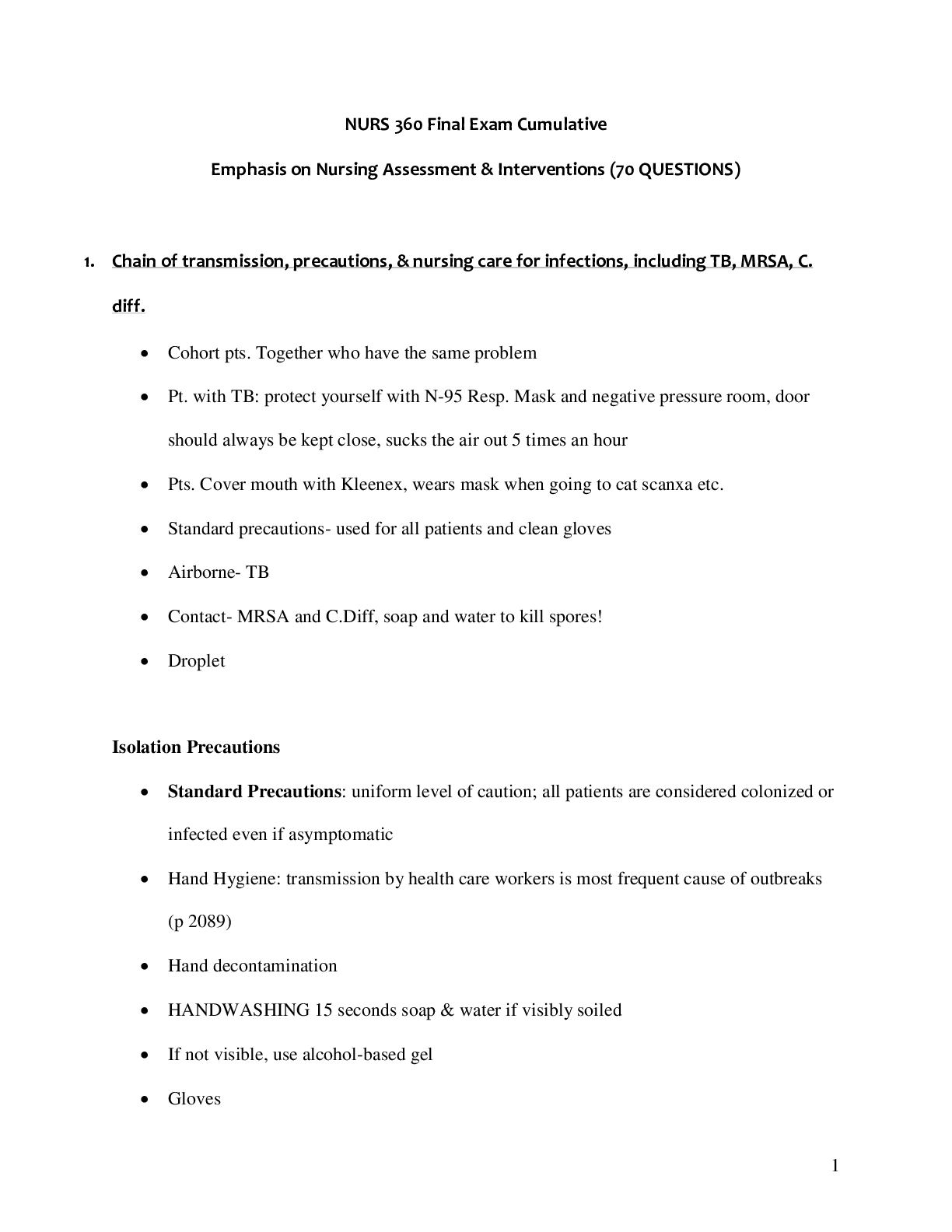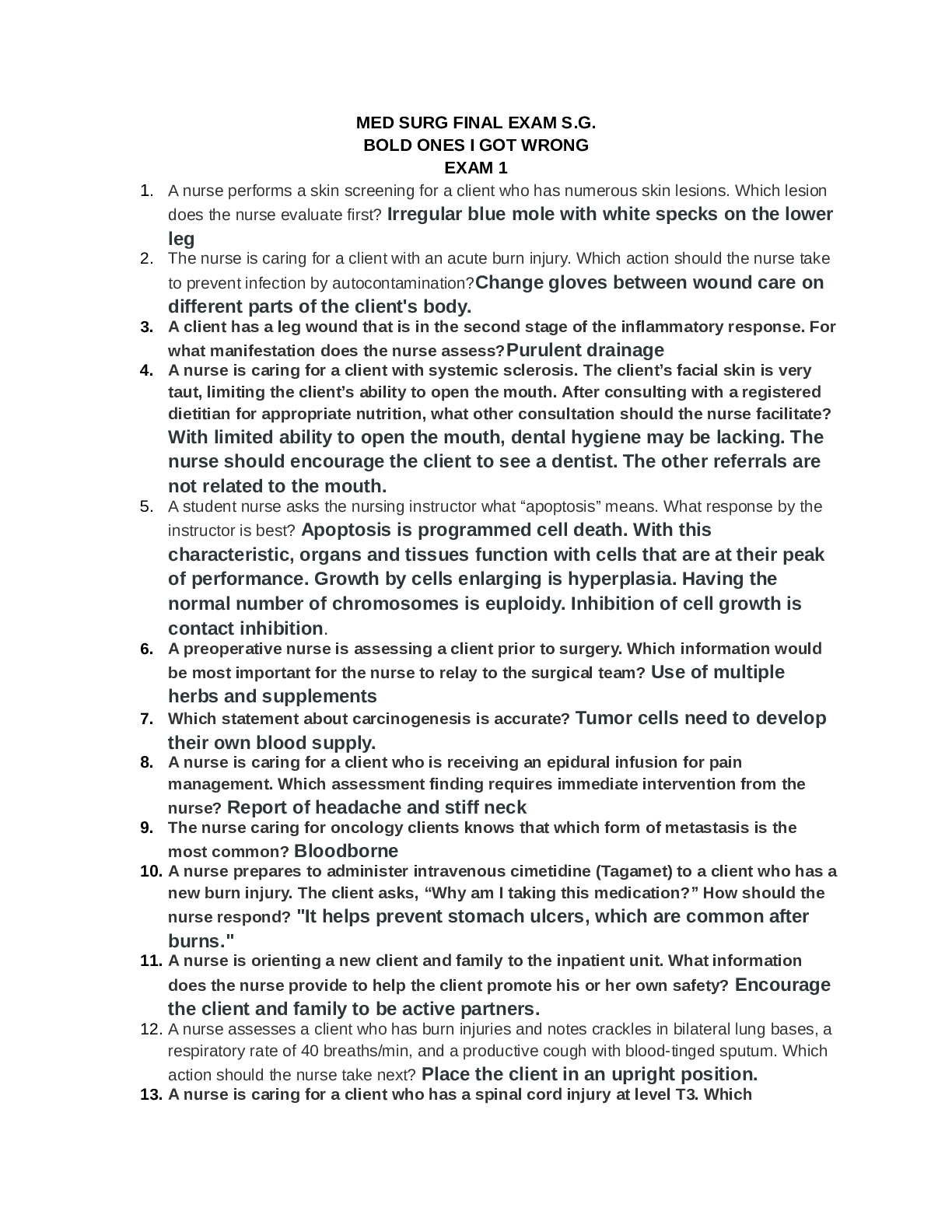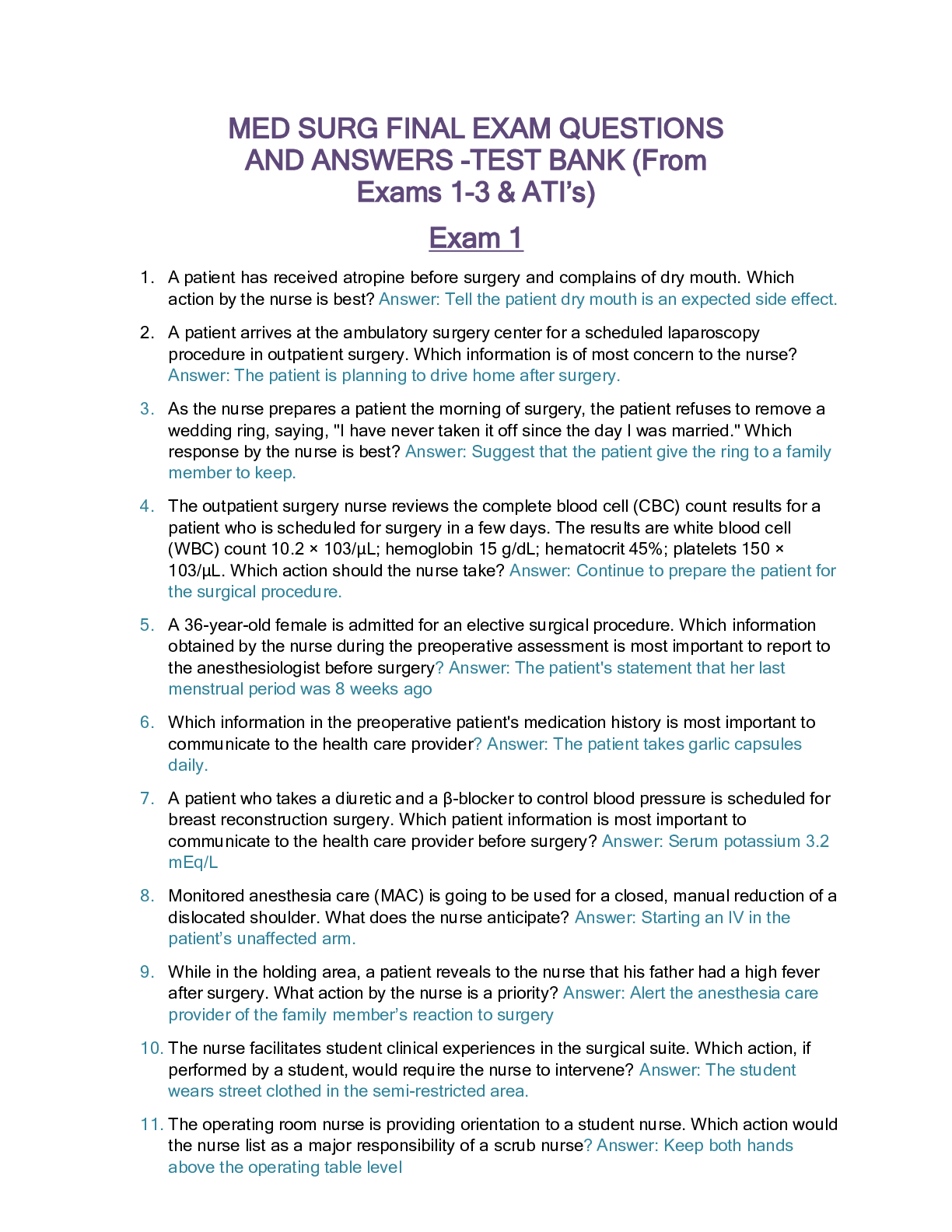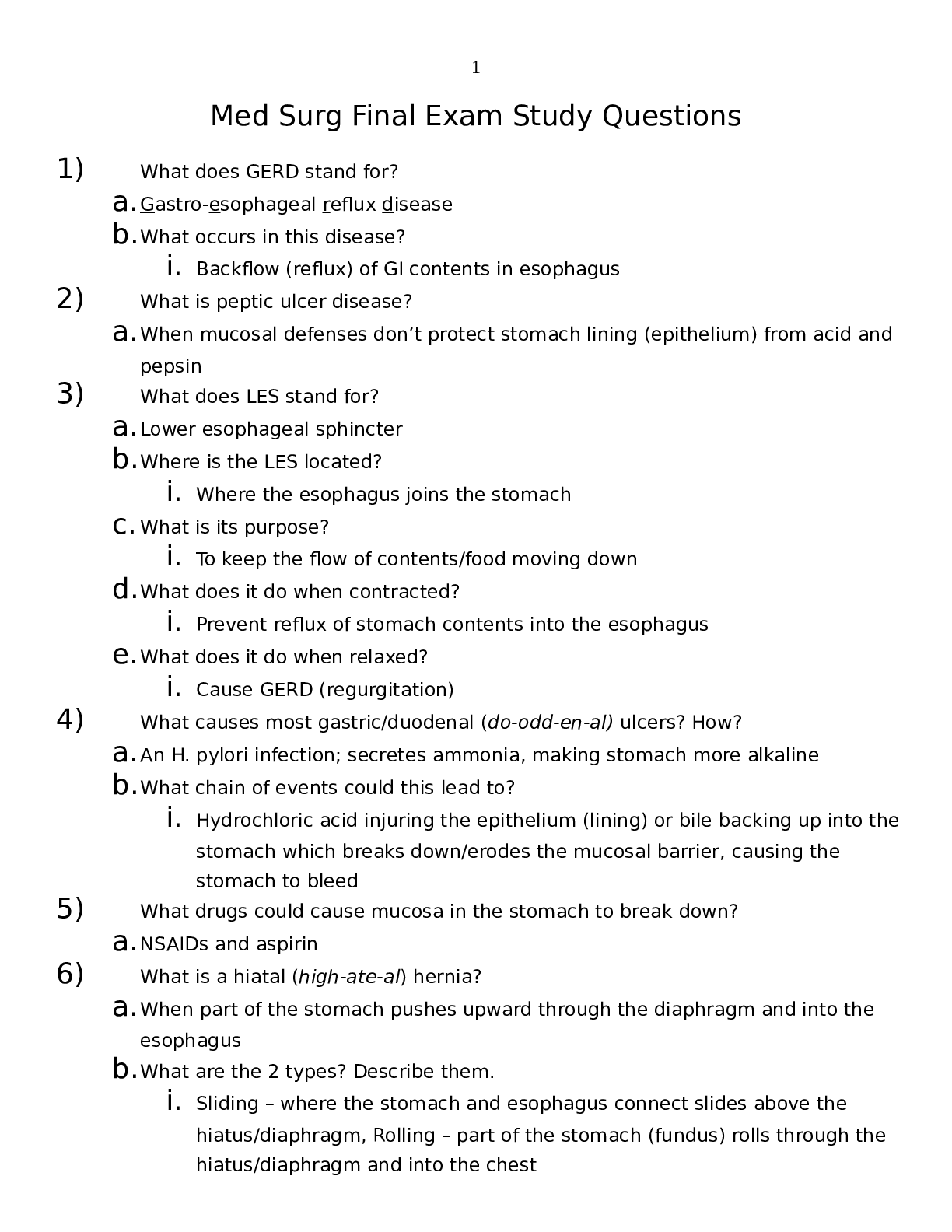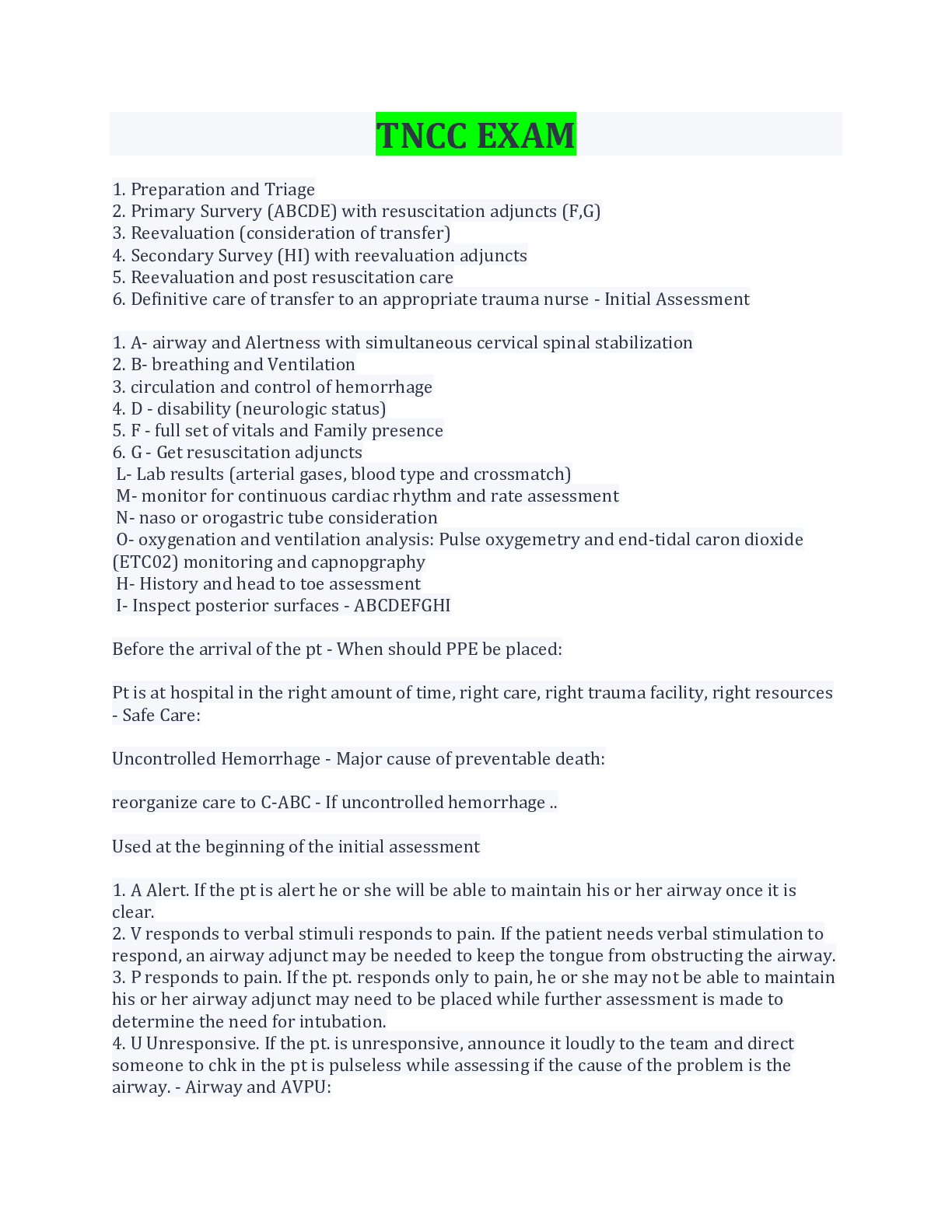Health Care > QUESTIONS & ANSWERS > ATI Med Surg Final Exam 2023 with 100% correct answers (All)
ATI Med Surg Final Exam 2023 with 100% correct answers
Document Content and Description Below
The nurse prepares a discharge teaching plan for a 44-year-old male patient who has recently been diagnosed with coronary artery disease. Which risk factor should the nurse plan to focus on during the... teaching session? A Type A personality B Elevated serum lipids C Family cardiac history D Hyperhomocysteinemia B Elevated serum lipids Dyslipidemia is one of the four major modifiable risk factors for coronary artery disease (CAD). The other major modifiable risk factors are hypertension, tobacco use, and physical inactivity. Research findings related to psychologic states (i.e., type A personality) as a risk factor for coronary artery disease have been inconsistent. Family history is a nonmodifiable risk factor. High homocysteine levels have been linked to an increased risk for CAD. The nurse instructs a 68-year-old woman with hypercholesterolemia about natural lipid-lowering therapies. The nurse determines further teaching is necessary if the patient makes which statement? A "Omega-3 fatty acids are helpful in reducing triglyceride levels." B "I should check with my physician before I start taking any herbal products." C "Herbal products do not go through as extensive testing as prescription drugs do." D "I will take garlic instead of my prescription medication to reduce my cholesterol." D "I will take garlic instead of my prescription medication to reduce my cholesterol." Current evidence does not support using garlic in the treatment of elevated cholesterol. Strong evidence supports the use of omega-3 fatty acids for reduction of triglyceride levels. Many herbal products are not standardized and effects are not predictable. Patients should consult with their health care provider before starting herbal or natural therapies. A 52-year-old male patient has received a bolus dose and an infusion of alteplase (Activase) for an ST-segment elevation myocardial infarction (STEMI). To determine the effectiveness of this medication, the nurse should assess the patient for the A presence of chest pain. B blood in the urine or stool. C tachycardia with hypotension. D decreased level of consciousness. A presence of chest pain. Alteplase is a fibrinolytic that is administered to patients who have had an STEMI. If the medication is effective, the patient's chest pain will resolve because the medication dissolves the thrombus in the coronary artery and results in reperfusion of the myocardium. Bleeding is a major complication of fibrinolytic therapy. Signs of major bleeding include decreased level of consciousness, blood in the urine or stool, and increased heart rate with decreased blood pressure. A 74-year-old man with a history of prostate cancer and hypertension is admitted to the emergency department with substernal chest pain. Which action will the nurse complete before administering sublingual nitroglycerin? A Administer morphine sulfate IV. B Auscultate heart and lung sounds. C Obtain a 12-lead electrocardiogram (ECG). D Assess for coronary artery disease risk factors. C Obtain a 12-lead electrocardiogram (ECG). If a patient has chest pain, the nurse should institute the following measures: (1) administer supplemental oxygen and position the patient in upright position unless contraindicated, (2) assess vital signs, (3) obtain a 12-lead ECG, (4) provide prompt pain relief first with a nitrate followed by an opioid analgesic if needed, and (5) auscultate heart sounds. Obtaining a 12-lead ECG during chest pain aids in the diagnosis. Which patient is at greatest risk for sudden cardiac death? A A 42-year-old white woman with hypertension and dyslipidemia B A 52-year-old African American man with left ventricular failure C A 62-year-old obese man with diabetes mellitus and high cholesterol D A 72-year-old Native American woman with a family history of heart disease B A 52-year-old African American man with left ventricular failure Patients with left ventricular dysfunction (ejection fraction < 30%) and ventricular dysrhythmias after MI are at greatest risk for sudden cardiac death (SCD). Other risk factors for SCD include (1) male gender (especially African American men), (2) family history of premature atherosclerosis, (3) tobacco use, (4) diabetes mellitus, (5) hypercholesterolemia, (6) hypertension, and (7) cardiomyopathy. [Show More]
Last updated: 1 year ago
Preview 1 out of 19 pages
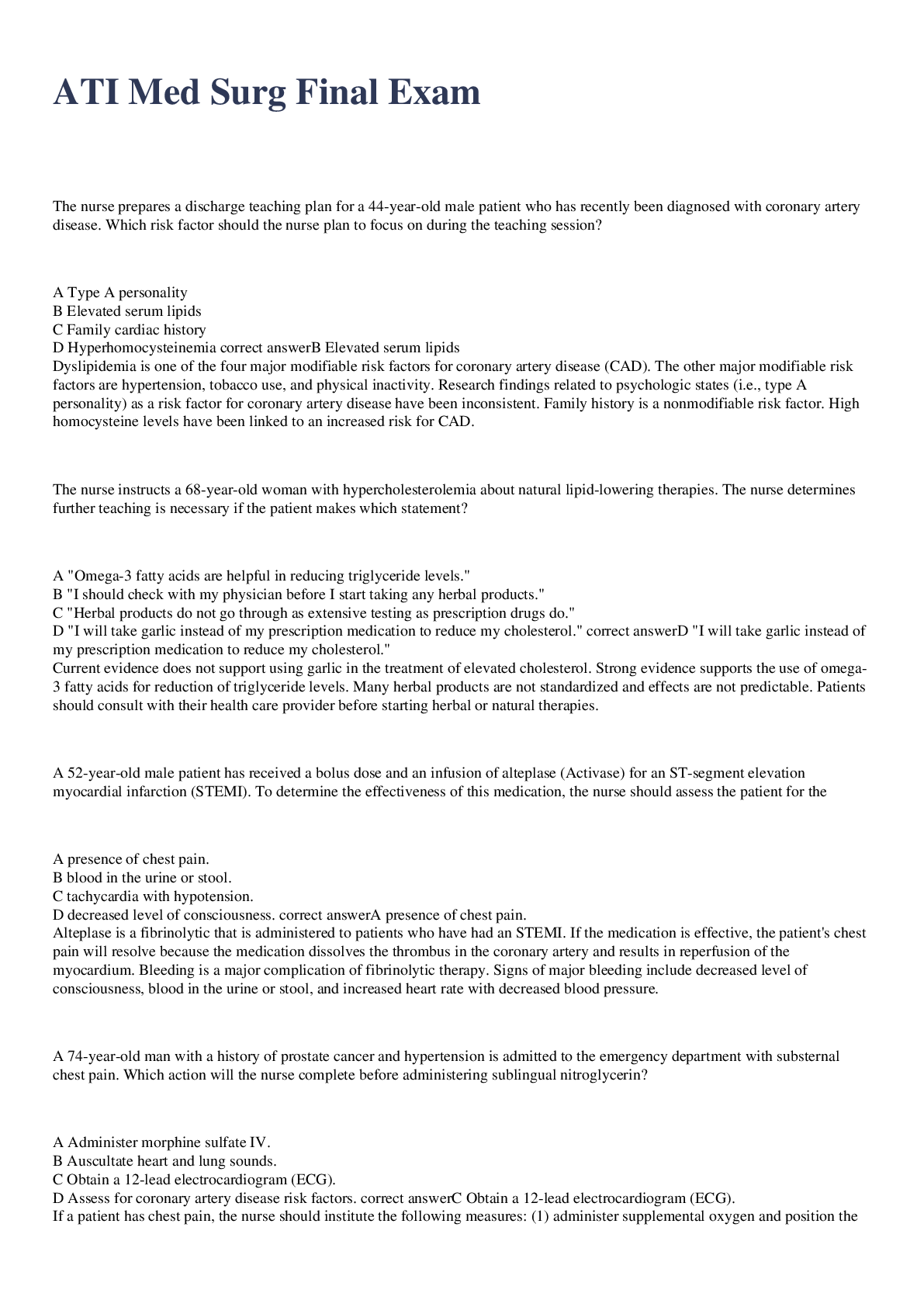
Buy this document to get the full access instantly
Instant Download Access after purchase
Add to cartInstant download
We Accept:

Reviews( 0 )
$14.00
Document information
Connected school, study & course
About the document
Uploaded On
Mar 30, 2023
Number of pages
19
Written in
Additional information
This document has been written for:
Uploaded
Mar 30, 2023
Downloads
0
Views
25

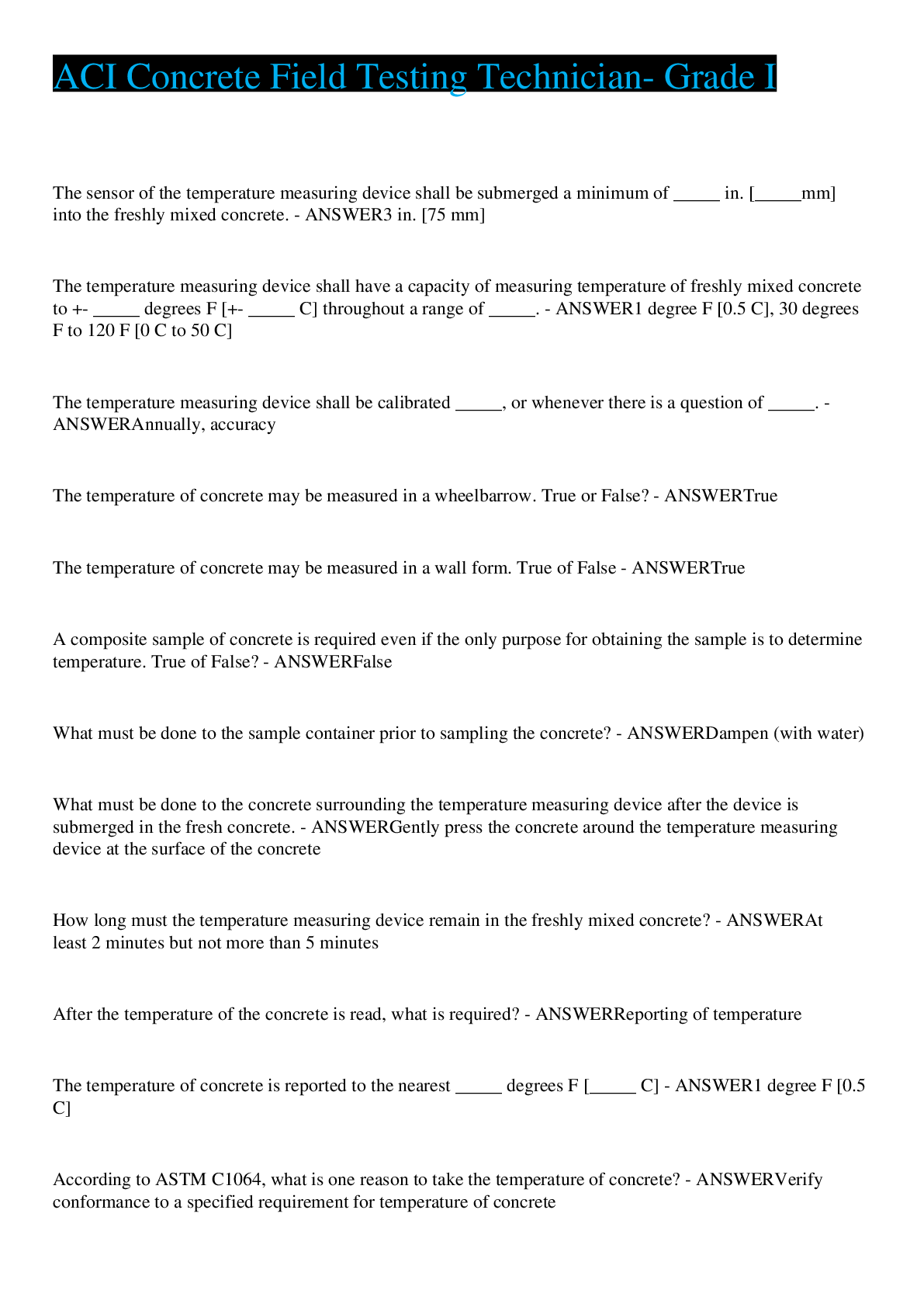


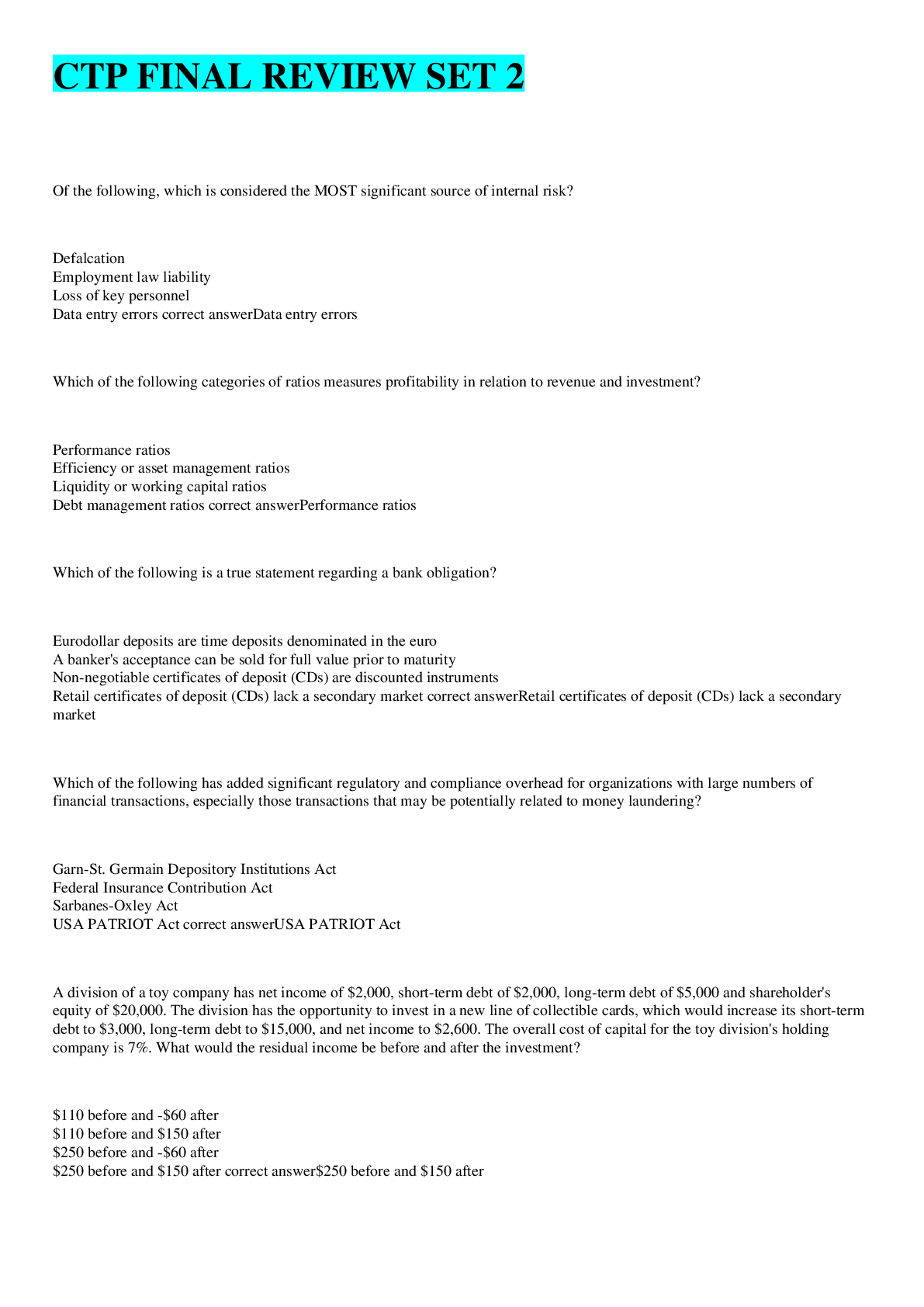
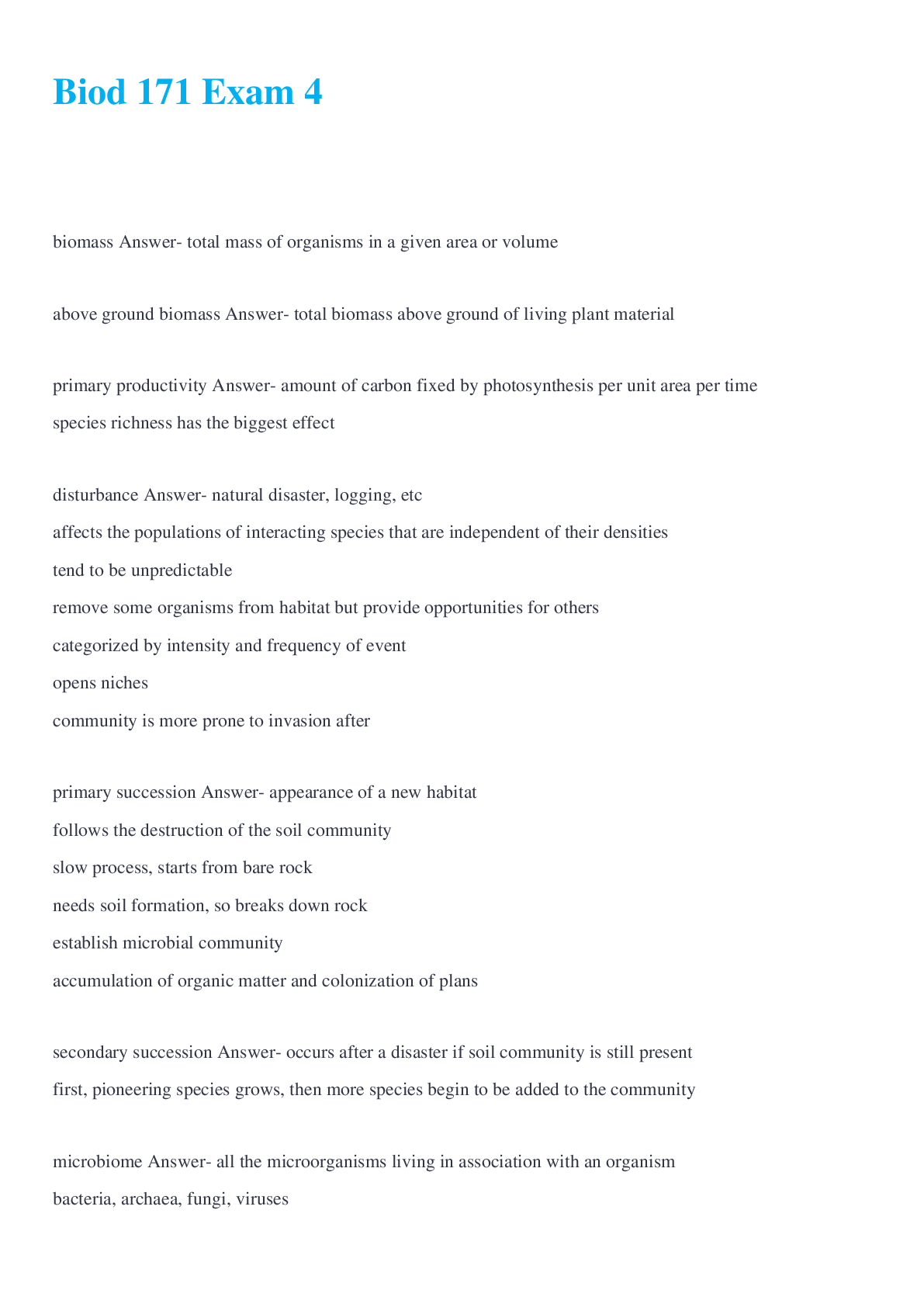
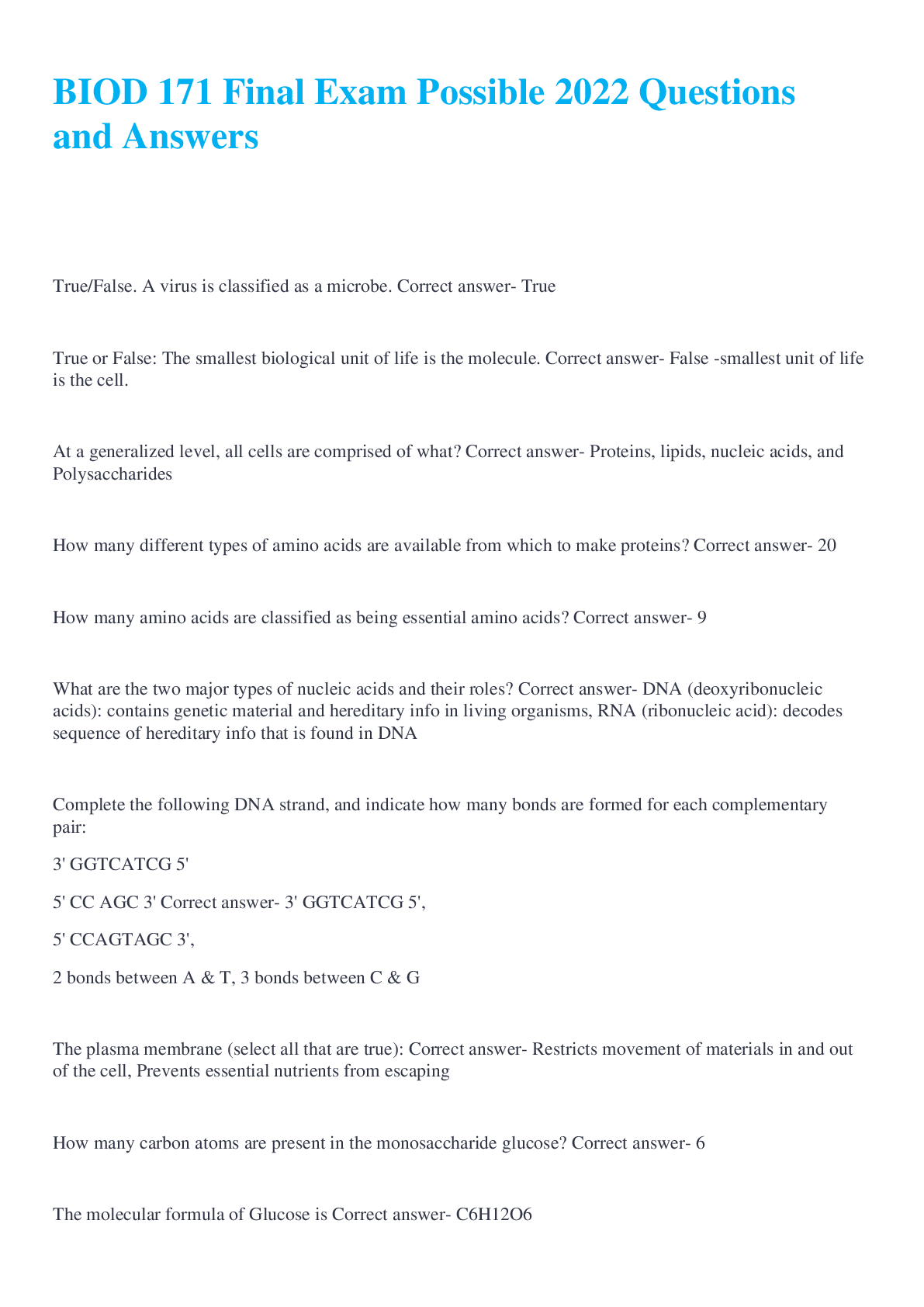
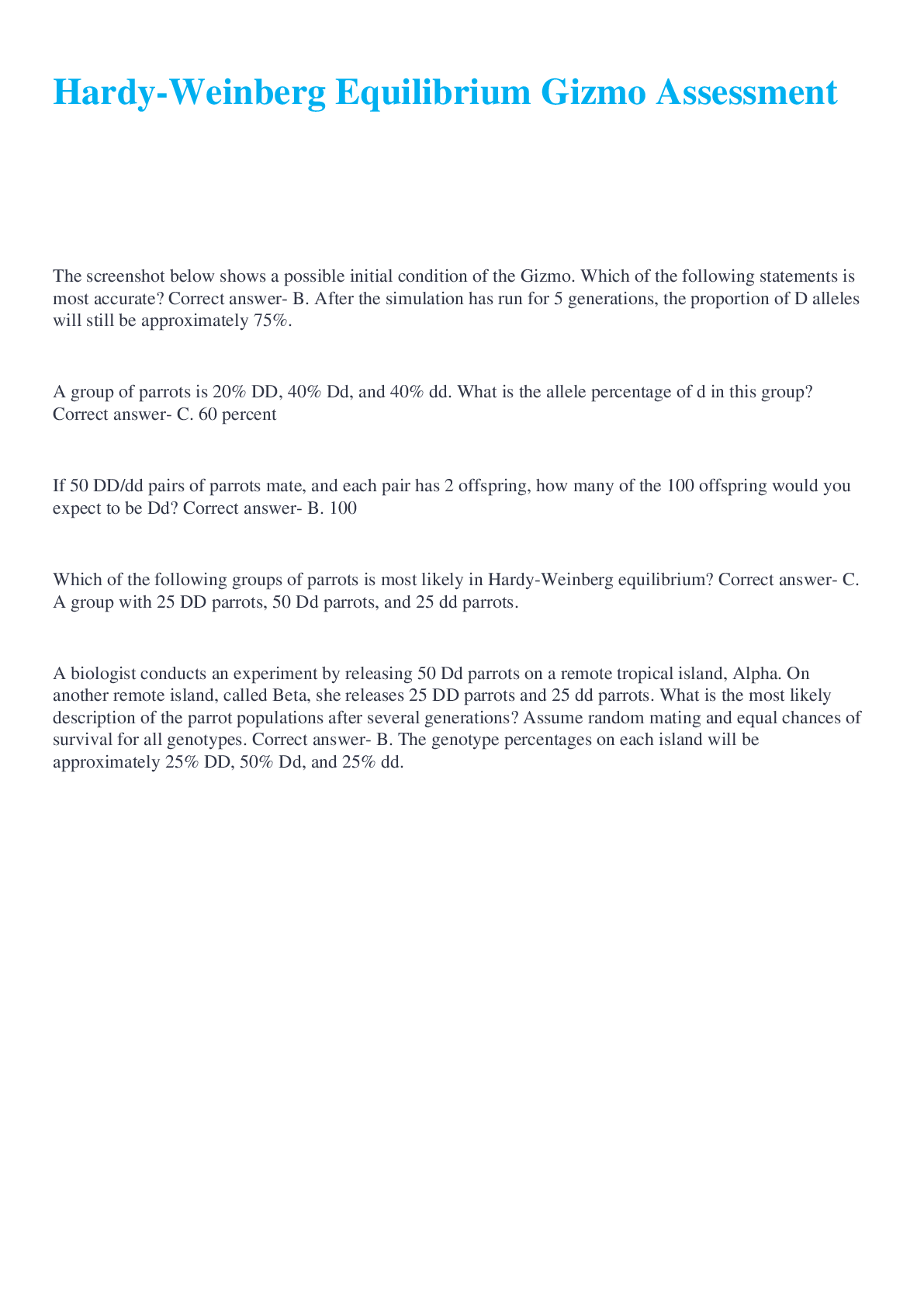
.png)
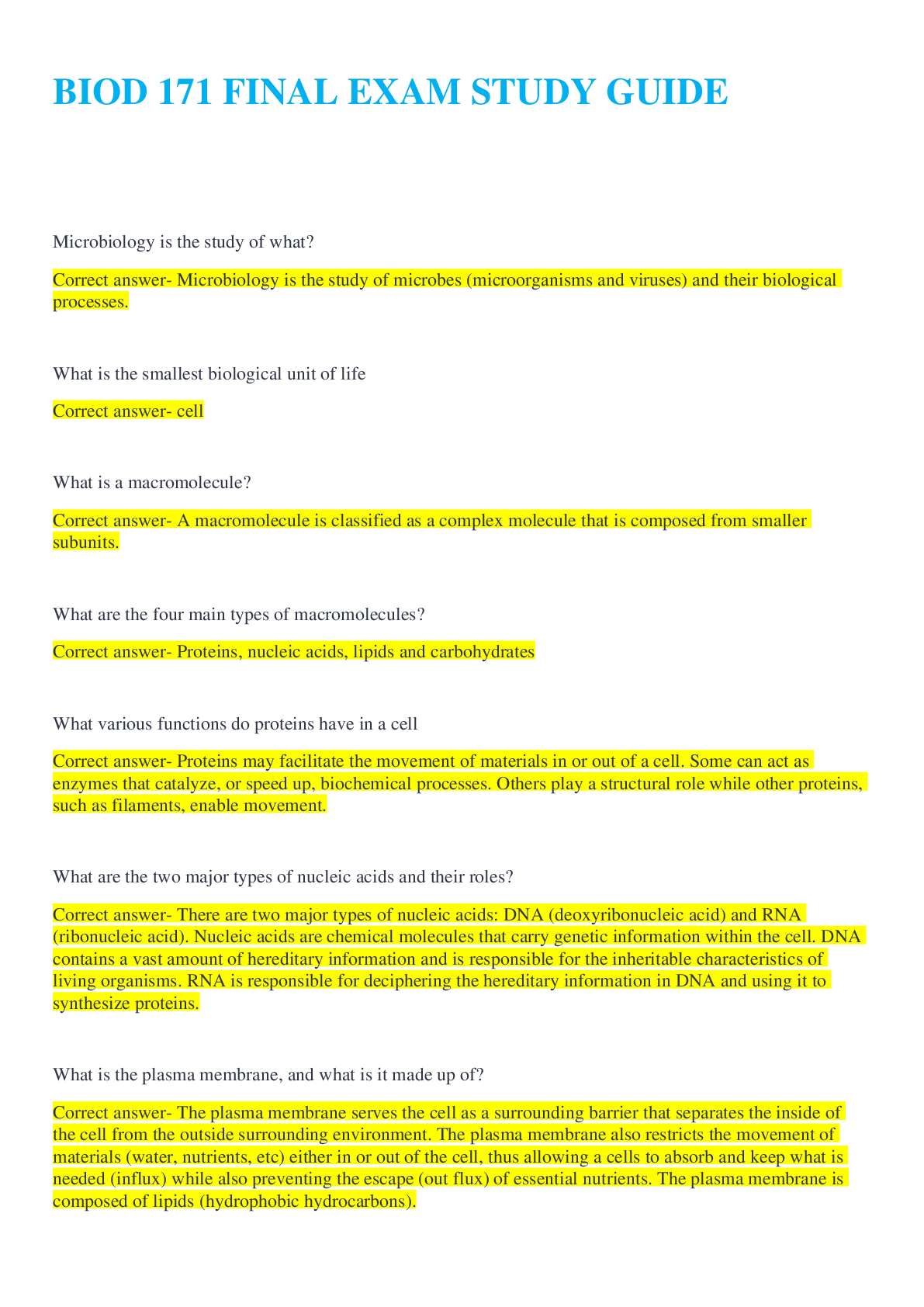
.png)

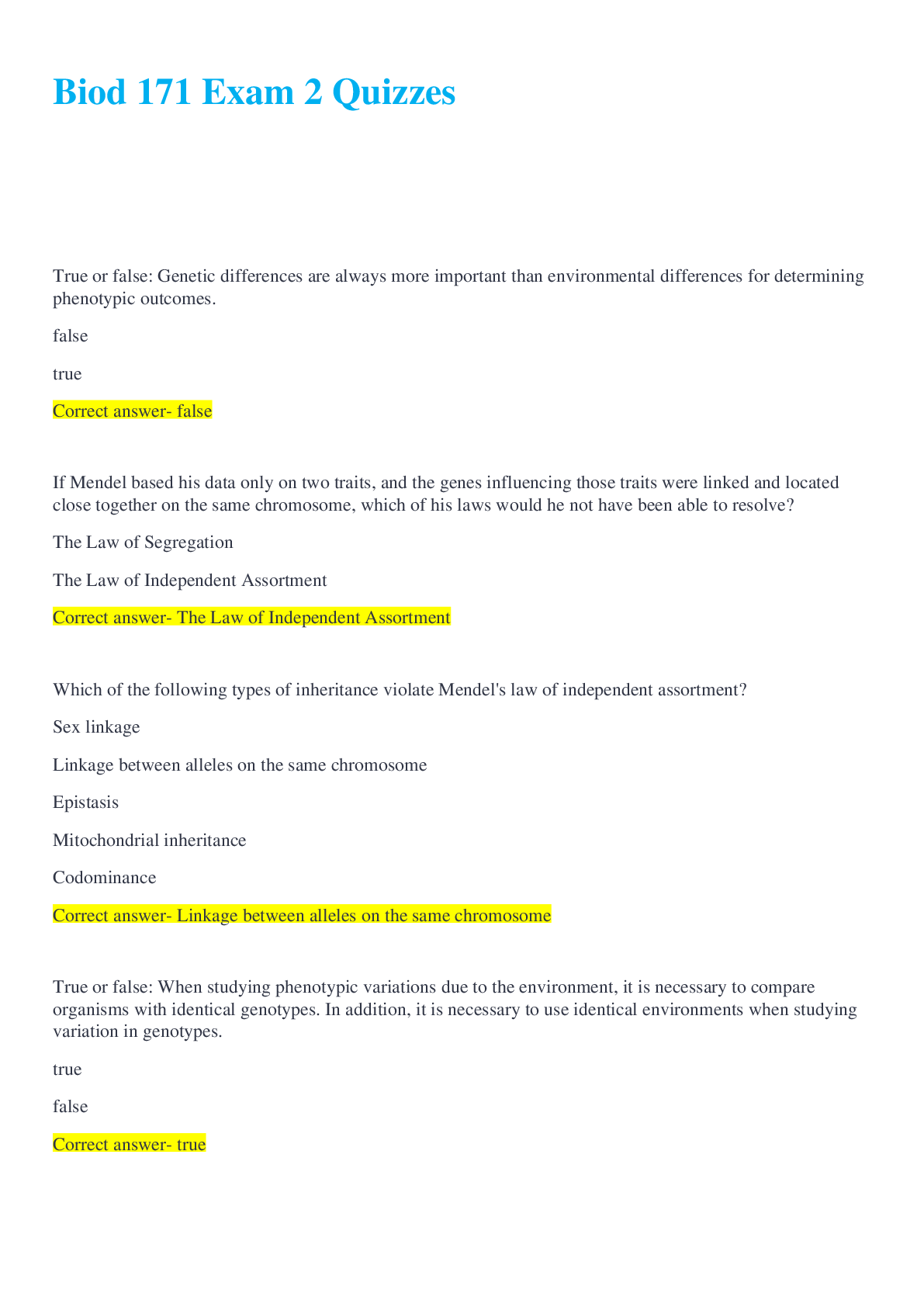
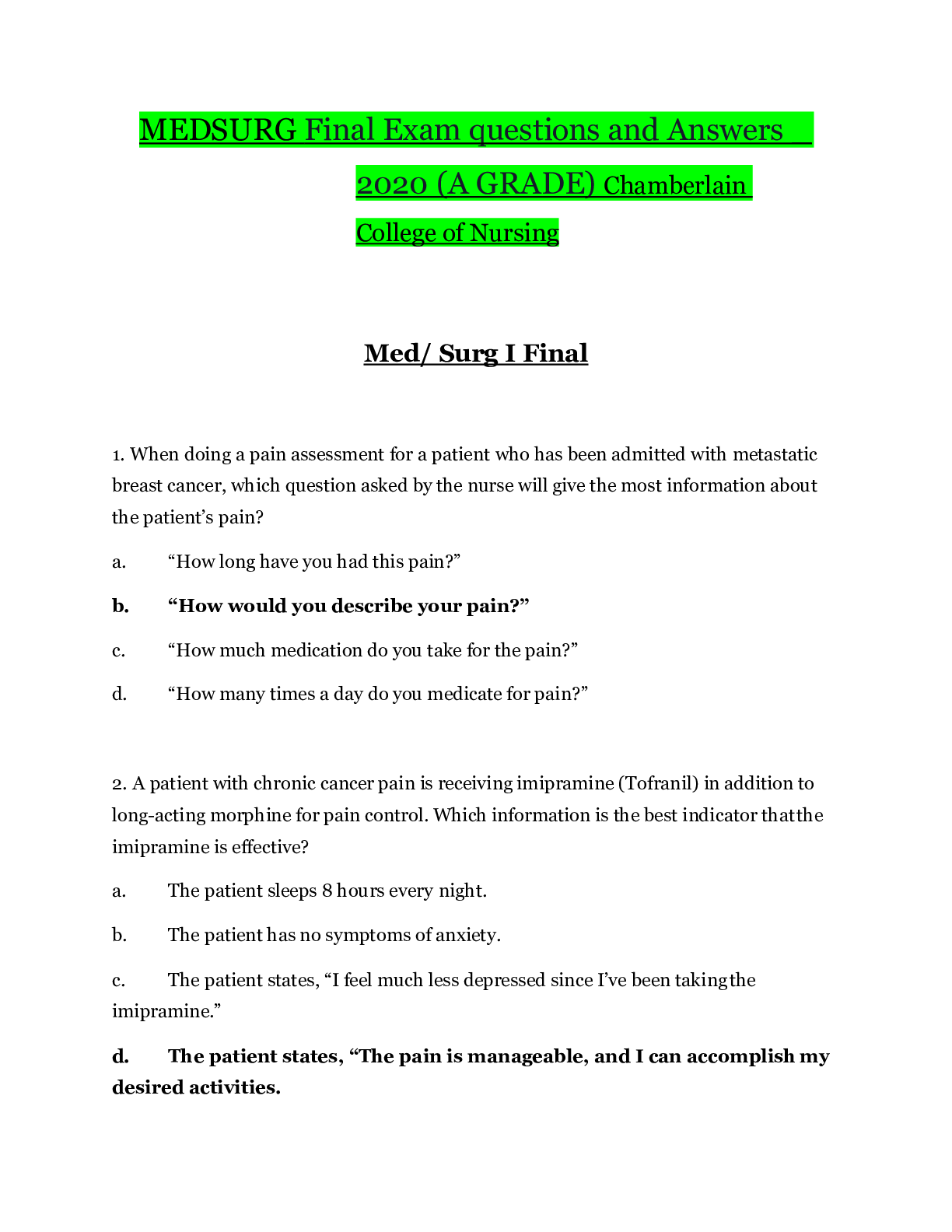
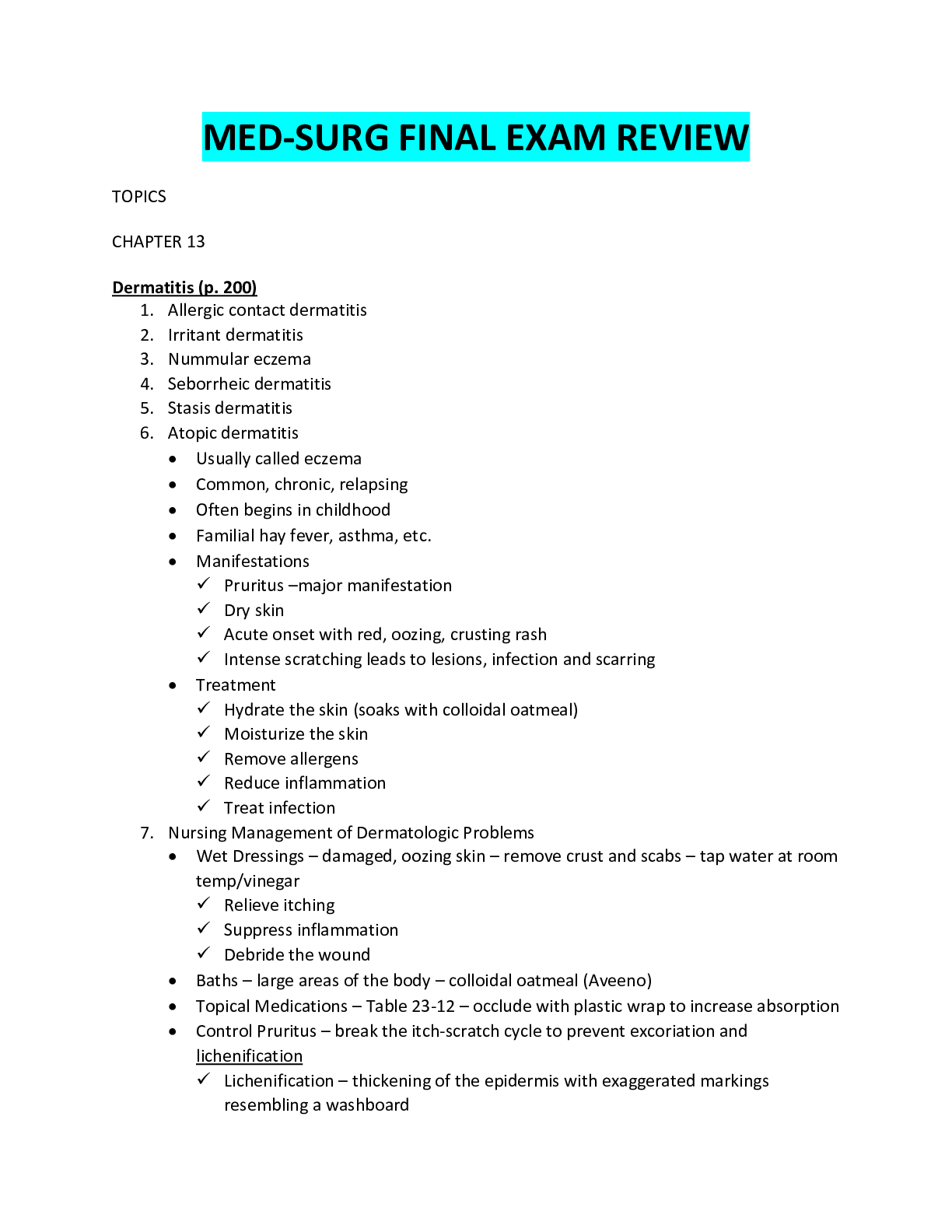
.png)
